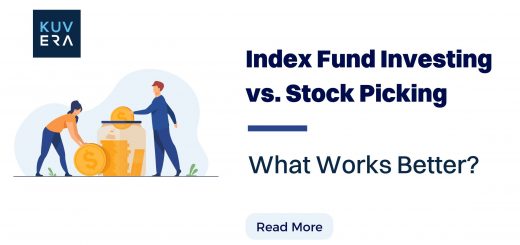Algorithms such as Machine Learning and Artificial Intelligence have become global buzzwords, affecting nearly every industry and redefining our understanding of the human-machine interface worldwide However, contemplating the usage of these machine-interactive languages in a market dependent mostly on human judgments, such as mutual funds, almost seems excessive. However, AI and machine learning are now utilized in the mutual fund industry through Quant mutual Funds.
Over the past several decades, the Indian capital market has been dominated by active investing, with the fund manager’s ability to identify top-performing equities and the appropriate sectors being highly prized. Quant mutual Funds have lately gained appeal in India, as institutional investors have failed in recent years to exceed benchmarks. Advocates of quant funds assert that using inputs and computer algorithms to select assets reduces the risks and expenses associated with human fund management. Therefore, let’s examine what Quant Funds are, how they operate, and whether you should invest in them.
What are Quant Mutual Funds?
Quant funds are akin to quasi active, quasi passive investments. The fund manager is ultimately responsible for investing decisions. A collection of rules and investing regulations determine the appropriate course of action. The established norms and regulations are automated mathematical and statistical procedures. There is the option of making value judgments. This method generates a portfolio template, commonly known as a quantitative fund model portfolio. Along with algorithms and processes to be followed, a quantitative model is known as such. The fund manager must periodically reproduce the model portfolio (monthly or quarterly). Regularly, the fund manager simply makes small adjustments to the portfolio. This method is referred to as quantitative investing.
The major responsibility of the fund manager is to replicate the portfolio and monitor the performance of the fund. Additionally, it aligns the portfolio with model outcomes. In addition, the fund manager introduces the quantitative fund only after extensive study, model testing, and simulation. As a result, the fund manager can also monitor the refinement of the portfolio as markets fluctuate over time.
Active fund investing resembles basic study and investment for future growth more than passive fund investing. Quantitative investing, on the other hand, involves trend analysis, computation, and statistical modeling of historical data. Thus, it is more aligned with mathematics and science, which assume that outcomes are predictable and reproducible.
Type of Quant Mutual Funds:
Traditional mutual funds are categorized by market capitalization, investment style, sector or theme, among other factors. Quant funds, on the other hand, are categorized based on quantitative parameters or statistical metrics inside the model. In India, quantitative funds use’single factor’ or’multi factor’ models. Based on these variables, these models are intended to filter the fund’s investing universe into a model portfolio.
Typically, the quant technique begins with the selection of market data (e.g., the NIFTY 500 companies) to determine when quant screens will begin working. The quantitative model is implemented, which serves as a filter (filters to narrow down the 500 companies). It typically cuts the list of 500 companies to approximately thirty. In order to create a model portfolio, the companies are then rated based on the quantitative factor’s strength.
- Single Factor Quant Model
It is the most prevalent quantitative method in India. Typically, they are created around these components and expressed as ratios such as P/E, P/B, etc. Additionally, they analyze the quality using ROE and ROCE. Statistical phenomena such as volatility are also investigated using standard deviation or beta.
These characteristics vary from company to company. As a result, only top enterprises will be included in the final model portfolio. These companies are ranked and selected based on one of the above criteria.
- Multi Factor Quant Model
Multifactor models express the return on an investment in terms of the asset’s risk in relation to an array of factors. Typically, these models integrate systematic aspects that characterize the average returns of a large number of volatile assets.
Multifactor models are utilized by asset owners, investment firms, investment consultants, and financial analysts for a variety of portfolio design, asset management, risk assessment, and general analytical purposes. Multifactor models offer greater descriptive flexibility and power than single-factor models, which are generally concentrated on the market-risk factor.
Features of Quant Mutual Funds
- Scalability: Since these are often developed in a laboratory and released after lengthy testing and development, they are also very scalable. Typically, the design is made to expand the business and is centered on a certain market.
- Predictable Outcomes: Since the quantitative fund strategy adheres to a specified technique and approach, the outcomes are frequently predictable. These funds, unlike conventional mutual funds, are not dependent on the fund manager’s market view and are not based on human judgments.
- Previously Analyzed Data: These Quant Fund models are based on historical data and mathematical models with a track record of success. Consequently, they may respond differently to any market disturbance or unanticipated variable movement. In such situations, it may have adverse and unexpected consequences.
- The Black Box Method: The fund managers of these funds are extremely secretive about their tactics and rarely disclose their construction and functioning. Quantitative funds lack transparency in comparison to conventional funds since they are sometimes veiled in ambiguity.
- No Human Prejudices Exist – The method and conclusions are typically objective. Consequently, they are immune to behavioral biases.
Who Should Invest In Quant Mutual Funds?
Quantitative funds are suitable for investors who intend to maintain their holdings for a lengthy period of time. This is owing to the fact that the proposed method may require substantial time to provide its full benefits. Therefore, investors aiming to record profits during favorable market conditions may avoid quantitative funds.
In addition, investors anticipate that these funds will readily generate substantial profits. However, they do not guarantee return. Minimizing human biases does not ensure the success of the fund. These funds are based on past performance and other factors that are not precise forecasts of future results. Therefore, investors interested in quant funds must understand the level of mathematics and programming involved.
Pros and Cons of Quant Funds
These are the pros of investing in quantitative funds:
- The allocation of the quant mutual funds is based on objective criteria and significantly reduces human intervention. In addition, the risk of error is reduced than in conventional investing.
- Due to its constant and passive investment strategy, this fund has low management fees and is therefore a cost-effective investment alternative.
- There is more risk management because it adheres to a set investing plan regardless of market conditions.
- System-based quantitative funds can process huge amounts of real-time data for asset allocation computations.
- These funds invest in genuine sources of return rather than a preferred asset class. This increases the fund’s risk management.
Cons
The limitation of investing in quantitative funds are as follows:
- These funds are based on prior performance and historical evidence. Also, some models may not address unexpected scenarios. Therefore, these funds do not offer guaranteed return.
- The quantitative model necessitates continual testing to achieve optimal performance.
- This model is based on numerous assumptions and utilizes artificial intelligence. Occasionally, these assumptions fail when market conditions shift abruptly.
List of Quant Mutual Funds In India
| Mutual Fund Scheme | AUM (INR) |
| Quant Quantamental Fund | 135.63 Cr |
| Nippon India Quant Fund | 32.71 Cr |
| Axis Quant Fund | 1,305.39 Cr |
| ICICI Prudential Quant Fund | 62.83 Cr |
| Tata Quant Fund | 42.07 Cr |
| DSP Quant Fund | 1,332.95 Cr |
Here is the Closer Look Over Quant Funds:
-
Quant Quantamental Fund
This fund has existed for 1.5 years, having been established on 13 April 2021. As of 3rd October 2022, Quant Quantamental Fund Direct Growth has INR 135.63 Crores in assets under management (AUM) and is a minor fund within its category. The fund’s expense ratio of 0.56% is lower than the expense ratios of the majority of other similar funds. Quant Quantitative Fund Direct – Growth returns during the previous year were 15.30%. Since its inception, it has generated average annual returns of 18.66%.
- The majority of the fund’s assets are invested in the Services, Consumer Staples, Financial, Communication, and Materials industries. It has a smaller allocation to the Services and Consumer Staples sectors than other funds in its category.
- Adani Enterprises Ltd., Adani Ports and Special Economic Zone Ltd., State Bank of India, ITC Ltd., and Ambuja Cements Ltd. are the top five holdings of the fund.
-
Nippon India Quant Fund
This fund has existed for nine years and nine months, having been established on January 1, 2013. As of 3rd October 2022, Nippon India Quant Fund Retail Direct Growth has INR 32.71 Crores in assets under management (AUM) and is a medium-sized fund within its category. The expense ratio of the fund is 0.3%, which is less than what the majority of similar fund charge.
The one-year returns for Nippon India Quant Fund Retail Direct-Growth were 1.33 percent. Since inception, it has generated average yearly returns of 11.67 percent. Every three years, the fund has doubled the money invested in it.
- The ability of the Nippon India Quant Fund Retail Direct-Growth scheme to consistently generate returns is comparable to that of the majority of funds in its category. Average is its capacity to control losses in a sinking market.
- The majority of the fund’s assets are allocated to the Financial, Consumer Staples, Energy, Automobile, and Technology sectors. It has less exposure to the Financial and Consumer Staples sectors than other funds in its category.
- Housing Development Finance Corpn. Ltd., ICICI Bank Ltd., Reliance Industries Ltd., Infosys Ltd., and Mahindra & Mahindra Ltd. are the top five holdings of the fund.
-
Axis Quant Fund
This fund has existed for one year and three months, having been established on 11/06/2021. As of 3rd October 2022, Axis Quant Fund Direct Growth has 1,305 Crores in assets under management (AUM) and is a medium-sized fund within its category. The fund’s expense ratio of 0.49% is lower than the expense ratios of the majority of other funds in its category. Last year, Axis Quant Fund Direct – Growth returns were 0.27 percent. Since its introduction, the average yearly return has been 7.62%.
- The majority of the fund’s assets are invested in the Financial, Energy, Automobile, Capital Goods, and Healthcare industries. It has less exposure to the Financial and Energy sectors than other funds in its category.
- ICICI Bank Ltd., HDFC Bank Ltd., ITC Ltd., State Bank of India, and Reliance Industries Ltd. are the top five holdings of the fund.
-
ICICI Prudential Quant Fund
This fund has existed for 1.10 years, having been established on November 23, 2020. As of 3rd October 2022, ICICI Prudential Quant Fund Direct Growth has 62.83 Crores in assets under management (AUM) and is a medium-sized fund within its category. The fund’s expense ratio of 0.49% is lower than the expense ratios of the majority of other funds in its category.
ICICI Prudential Quant Fund Direct – Growth returns over the past year have been -3.18 percent. Since its inception, it has generated average annual returns of 20.18%.
- The majority of the fund’s assets are invested in the Financial, Energy, Technology, Consumer Staples, and Communication industries. It has less exposure to the Financial and Energy sectors than other funds in its category.
- Housing Development Finance Corpn. Ltd., Reliance Industries Ltd., ICICI Bank Ltd., Infosys Ltd., and Bharti Airtel Ltd. are the top five holdings of the fund.
-
Tata Quant Fund
This fund has existed for two years and nine months, having been established on January 3, 2020. As of 3rd October 2022, Tata Quant Fund Direct Growth has 42.07 Crores in assets under management (AUM) and is a medium-sized fund within its category. The expense ratio of the fund, at 0.9%, is greater than that of the majority of the funds in its category.
The one-year growth returns of Tata Quant Fund Direct were -4.07%. Since inception, it has generated average yearly returns of 2.26 percent.
- The majority of the fund’s assets are invested in the Financial, Automobile, Energy, Materials, and Communication industries. It has less exposure to the Financial and Automotive sectors than other funds in its category.
- Mahindra & Mahindra Ltd., ICICI Bank Ltd., Petronet LNG Ltd., Coal India Ltd., and Canara Bank are the top five holdings of the fund.
-
DSP Quant Mutual Fund
This fund has existed for three years and four months, having been established on May 20, 2019. As of 3rd October 2022, DSP Quant Fund Direct Growth has INR 1,332.95 Crores in assets under management (AUM) and is a medium-sized fund within its category. The fund’s expense ratio of 0.56% is lower than the expense ratios of the majority of other funds in its category.
DSP Quant Fund Direct – Growth returns during the past year were -8.08 percent. Since its inception, it has generated average annual returns of 15.34%. Every three years, the fund has doubled the money invested in it.
The DSP Quant Fund Direct – Growth scheme’s ability to provide consistent returns is comparable to the majority of funds in its category. It has a below-average capacity to control losses in a sinking market.
- The majority of the fund’s assets are invested in the Financial, Technology, Consumer Staples, Materials, and Healthcare industries. It has less exposure to the Financial and Technology sectors than other funds in the same category.
- ICICI Bank Ltd., Bajaj Finance Ltd., HDFC Bank Ltd., Kotak Mahindra Bank Ltd., and Page Industries Ltd. are the top five holdings of the fund.
Conclusion
With all the risks and uncertainty associated with quant investing, objectivity, reasonable transparency, and decreased costs combine for a credible argument. Consequently, if you are an investor with a high risk tolerance and a decent understanding of markets and possibly even this field, you may consider attempt quantitative investing with a long investment horizon.
FAQ
-
Why are Quant funds considered better than other traditional mutual funds?
Quant funds may make investment decisions faster than human managers. As a result, they may make purchases more quickly and profit more effectively from minuscule price differences, something regular mutual funds may not be able to do.
-
How to Start Quant Mutal Fund SIP Online?
One can start investing in Quant Mutual Fund Online in Kuvera.
-
How to calculate Mutual Fund SIP?
To Calculate the mutual fund sip, one need to take certain things such as
-
- The Investment Amount
- SIP Tenure
- Expected Interest Rate
And also use sip calculator to calculate SIP amount.
Interested in how we think about the markets?
Read more: Zen And The Art Of Investing
Watch/hear on YouTube:
Start investing through a platform that brings goal planning and investing to your fingertips. Visit Kuvera.in to discover Direct Plans and Fixed Deposits and start investing today.
#MutualFundSahiHai #KuveraSabseSahiHai!











